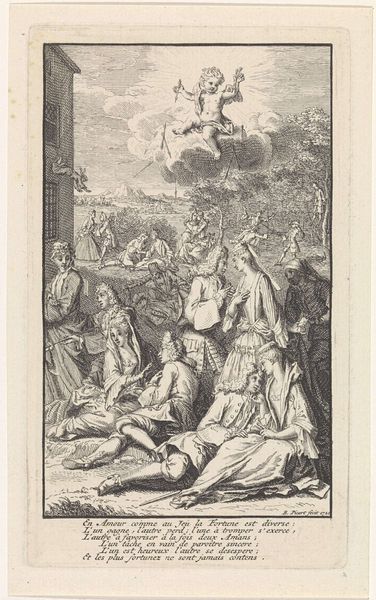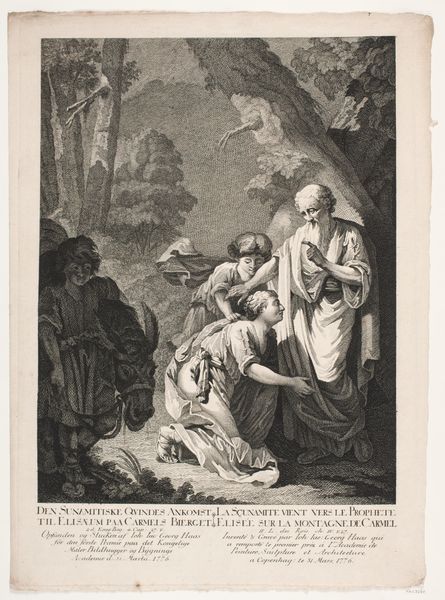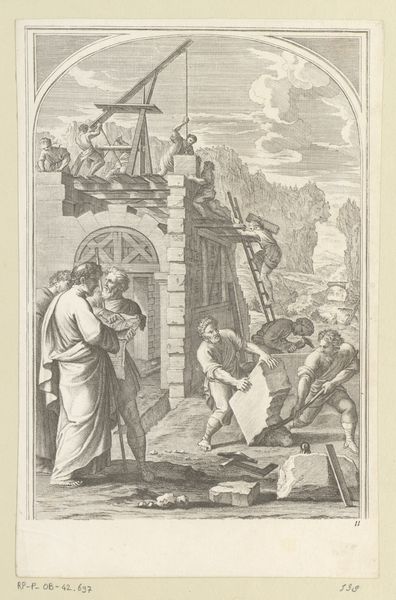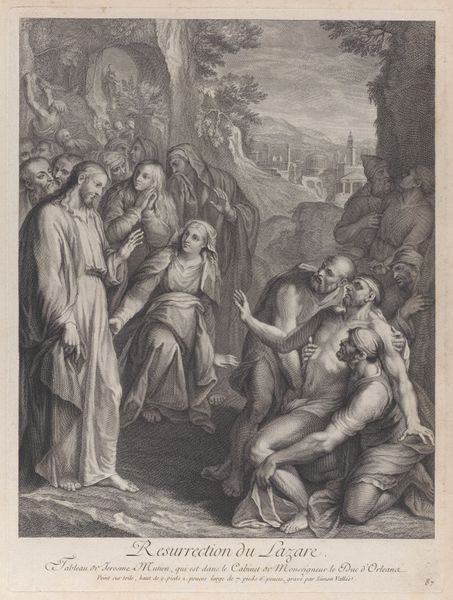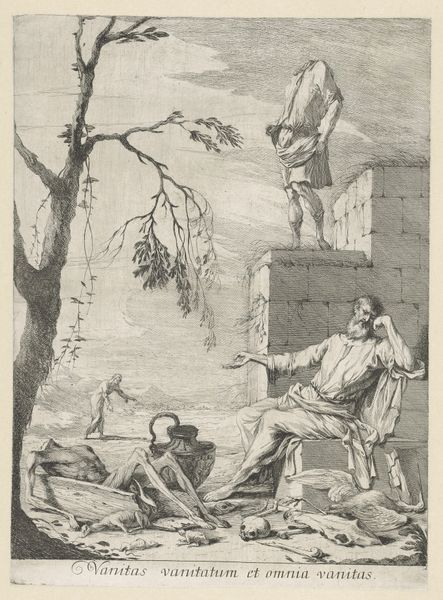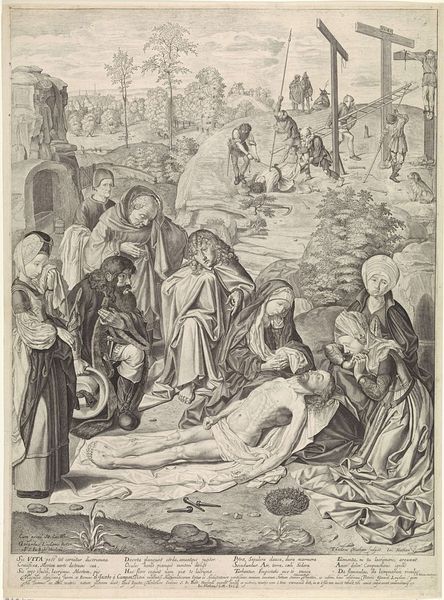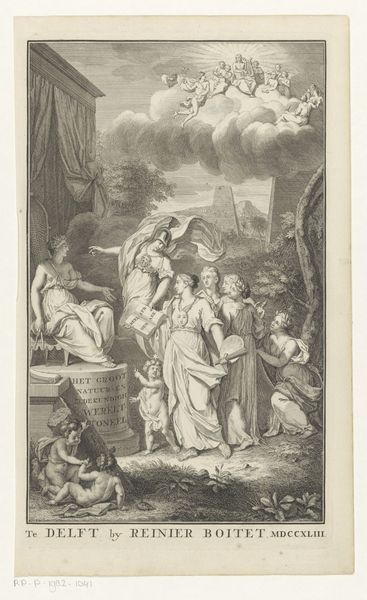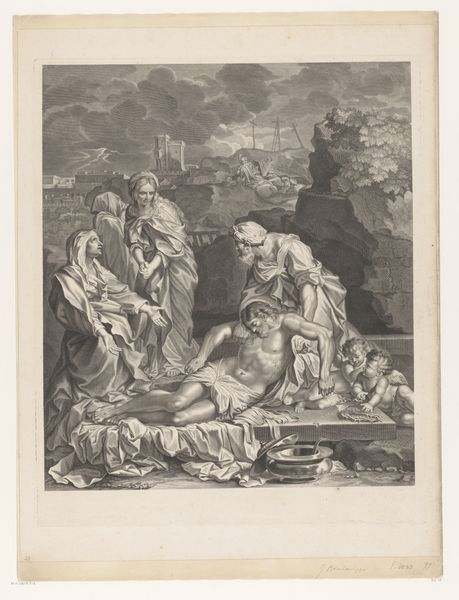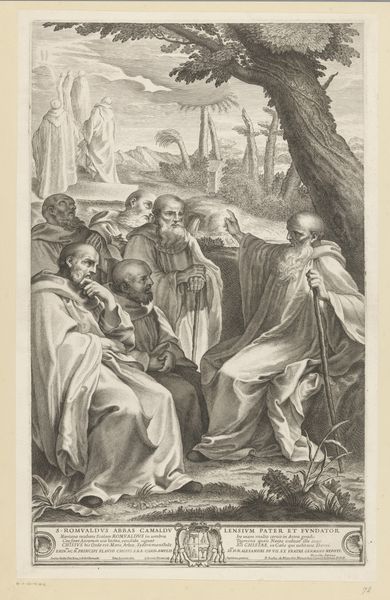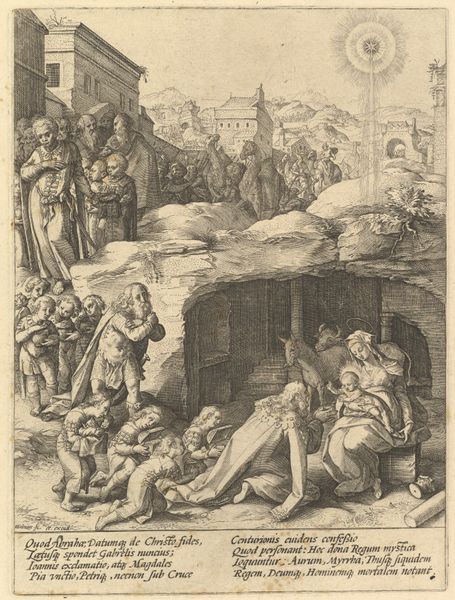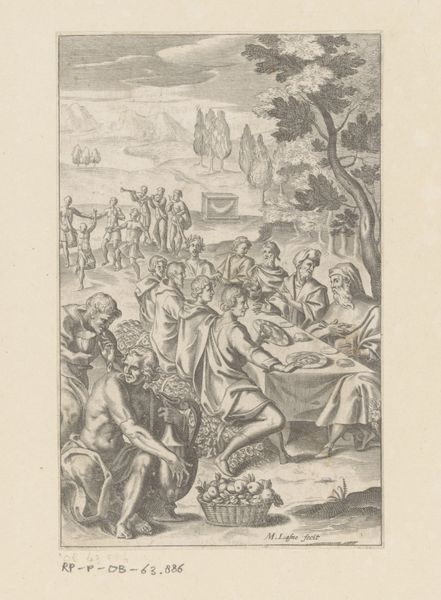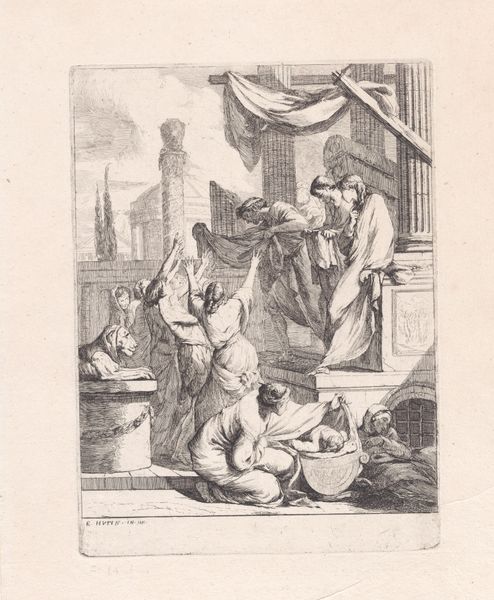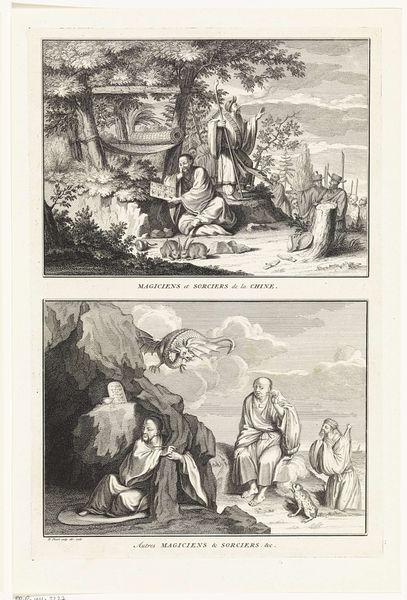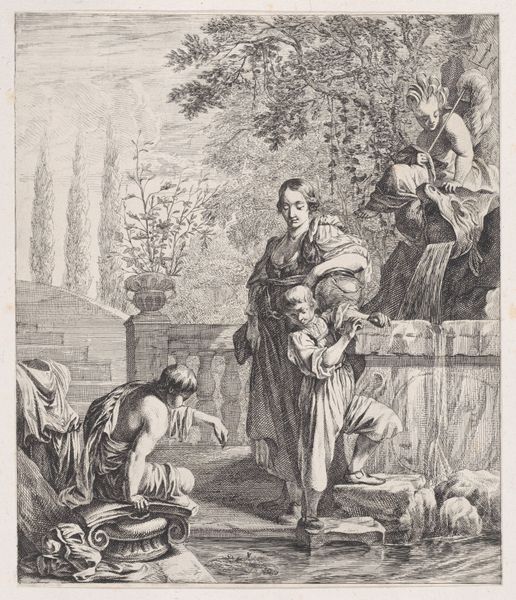
drawing, print, engraving
#
drawing
#
allegory
#
baroque
# print
#
pen illustration
#
old engraving style
#
landscape
#
form
#
road
#
pen-ink sketch
#
line
#
cityscape
#
history-painting
#
italian-renaissance
#
engraving
Dimensions: height 220 mm, width 160 mm
Copyright: Rijks Museum: Open Domain
Editor: Here we have "Allegory on the Road to Rome," an engraving made around 1728 by Bernard Picart, currently held at the Rijksmuseum. It's quite intricate; the eye jumps all over the place with its busy composition, and yet the textures feel a little flat, typical of engravings I think. What leaps out at you when you see it? Curator: You know, it's funny you say the textures feel flat – perhaps intentionally so! The entire scene has the quality of a dream, a remembrance of a classical past filtered through a distinctly 18th-century lens. I see, rather than the literal, the layers of meaning piled as high as those imagined Roman hills! Consider that reclining figure – a river god perhaps? And then, those meticulously drawn figures engaged in… road construction? What do you make of this juxtaposition of the allegorical and the practical? Editor: Well, it's odd, certainly! The reclining figure seems so…disengaged from the labor going on around him. It’s almost as if he's dreaming the whole scene into being. Or maybe bemoaning what's being done! Curator: Precisely! Picart gives us not just a picture of road building, but an invitation to reflect on the very idea of progress, of empire, and the cost – perhaps a pastoral one! - of its march forward. The labor, rendered almost mechanically, versus the lush idyll fading into memory… Which story does this image seem to value more? Does it criticize or glorify this process of paving the earth? I keep changing my mind! Editor: It definitely complicates a simple, triumphant reading of the Roman Empire. Makes me wonder about who this was actually made *for*? Curator: An excellent question! These prints were made to circulate, to be discussed, and, just like us, debated! They weren't just passively consumed. Picart sparks the critical process, and that feels more valuable than any definitive statement. Editor: So it’s a springboard rather than a fixed point? I love that! Makes me appreciate the “flatness” differently too, more about getting the idea across than getting hung up on detail. Thanks!
Comments
No comments
Be the first to comment and join the conversation on the ultimate creative platform.
